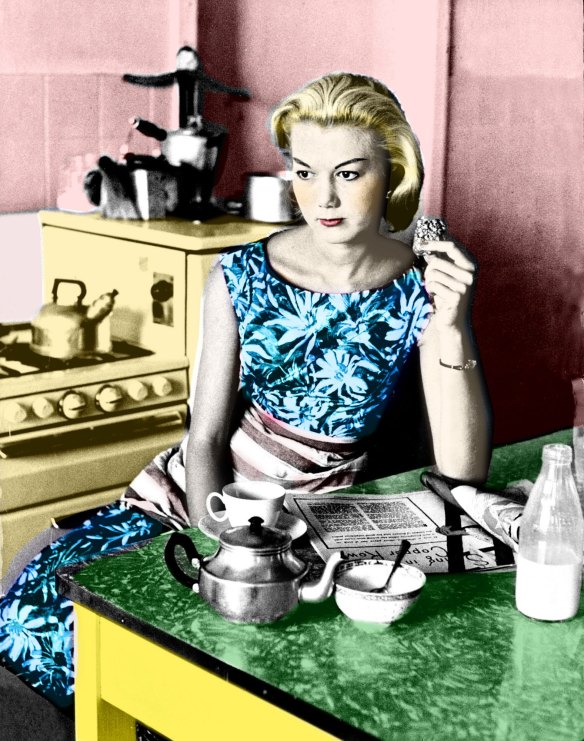The history of the lamington, an Australian cake steeped in chocolate, coconut and controversy

A couple of years ago, a great controversy erupted at my dinner table. My husband and I were dining at our home in Los Angeles with another couple, who – like us – are made up of one American spouse and one Australian. The topic of lamingtons arose, and the Australians were asked to describe our great national treat. "It's a square of sponge or yellow cake" my well-meaning fellow countryman began, "that's coated in chocolate and rolled in coconut. And it has a layer of jam in the middle."
"JAM?!?" I cried. "There is no jam! Not in a proper lamington." If you'd asked me beforehand, I never would have guessed I had so much passion on the subject. But apparently I do, which is quite fitting. The lamington has a long history of controversy, the main one being: what is the origin of this most Australian of treats?
That question has an answer so complex it prompted Maurice French, emeritus professor of history at the University of Southern Queensland, to write an entire book on the subject. The Lamington Enigma: A survey of the evidence, traces the history of the lamington, its precursors and the personalities who surrounded its emergence, and comes up with the most probable answer to the question of who invented the thing, and why. Much space is given to debunking competing theories of the sweet's origins, of which there are many.
What is known is that the lamington was named for Lord Lamington, who served as Governor of Queensland from 1896 to 1901, or perhaps his wife, Lady Lamington. What isn't clear is who was the first to cook the treat and bestow it with the governor's name. The first known printed recipe for "lamington cake" appeared in the December 17, 1900, issue of Queensland Country Life, along with several other recipes, under the headline "Useful Recipes".
In the following years, recipes for lamingtons appeared in other newspapers, and in 1908 they began showing up in cookbooks as well, beginning with a book focused on the cookery of Hobart. By the mid 1910s, according to newspaper archives, they became a staple of baking competitions at regional fairs. (The earliest example I could find was a 1914 notice in the Hamilton Spectator in Hamilton, Victoria, announcing the cookery competition categories for that year's Balmoral Pastoral and Agricultural Society Show.) In other words, the interval between the invention of the lamington and its widespread popularity was very short.

Professor French points to several precursors to the lamington, some from Queensland, some from New Zealand, and one from America. The popularity of afternoon tea saw an explosion of small cakes and confections, and the lamington no doubt grew from this trend of small, easily consumable baked goods.
But who was the clever cook who first cut and iced a sponge cake, then rolled it in coconut? One story has the sponge landing in the icing by accident, the fault of a clumsy maid. Another attributes the invention to a cooking instructor at Brisbane's Central College. The most likely culprit, however, is Lord Lamington's chef, the French-born Armand Galland. There are theories about Galland coming up with the cake in a pinch as unexpected guests arrived, or as a way to use up stale sponge.
In his book, French debunks many of these stories. It makes no sense that this was a rushed invention, he argues: lamingtons must cool before they're iced, and then set again before they're served. The chef of the governor would never serve stale sponge. But still, the most likely inventor is Galland, it probably happened around 1900, and there's no doubt that Queensland can claim the title of birthplace of the lamington.
Besides the identity of the originator, another question lingered for me: why did the lamington spread so quickly and retain its popularity over the decades, becoming an Australian icon? Why not another of the small cakes of the time? I reached out to French and asked him for his opinion. "The ongoing popularity of the lamington for afternoon teas and country dance suppers," French says, "was that, once made and dried, it was a) easily transportable over rough distances, and b) remained fresh for several days." He's likely correct, of course, but I also appreciate the theory that can be summed up by the last line of a lamington recipe printed in a 1904 Sydney newspaper: "This cake is most delicious."
And what of my own controversy, the one concerning jam? Well, when I'm not fuelled by a few glasses of wine and the friendly competitiveness of dinner table banter, I'm of the mind that you should eat whatever you want. If you like jam in your lamingtons, that's between you and your baker.
But the history books are clear: No jam appears in any of the original recipes, or any of the recipes that appeared in the following decade. In French's book on the subject, jam is so insignificant that it does not even warrant an entry in the index.
- More:
- Food
From our partners
Original URL: https://www.theage.com.au/goodfood/the-history-of-the-lamington-an-australian-icon-20171219-h07f36.html